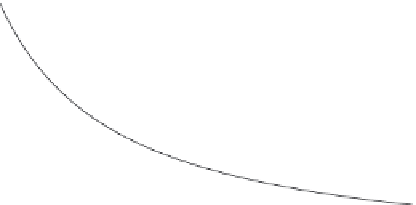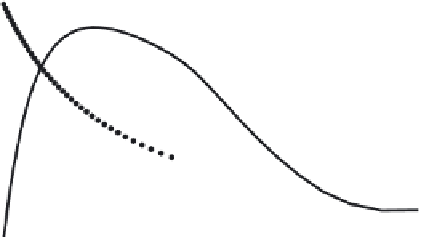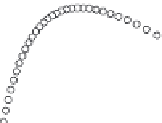Environmental Engineering Reference
In-Depth Information
14
0.6
12
0.5
10
0.4
C
p
8
0.3
λ
6
0.2
4
0.1
2
0
0
-0.1
0
5
10
15
20
25
Wind Speed V m/s
Figure 5 : A sample of power coeffi cient obtained by BEM theory.
7 Yaw control
Yaw control is a function to face the rotor to the natural wind so that the WT can
capture maximum energy from the wind. Therefore, a WT shall face perpendicular
to the wind directions as much as possible at all times. Because of the dimensional
effect, a SWT will much more susceptible to be caught in local smaller eddies than
LWTs and as a result, yaw control is technically more complicated than LWTs.
One thing most desirable is stable wind, however, the people often like to install
SWTs rather close to or directly upon buildings where the wind tends to be more
turbulent.
It might be better to provide a fi ne yaw controls system but actually almost all
mini- and micro-WT have passive control systems.
Yaw motion is governed not only by yaw control device but also inertia and gyro-
scopic moment of the nacelle and yawing dynamic ability of the rotor itself. Some
typical yaw control systems with mini- and micro-WTs are described below.
7.1 Tail wing
An upwind oriented rotor could have yaw instability. Most of LWTs except
downwind type is equipped with a yaw control system driven by a hydraulic
or electric power. With SWTs of mini- or micro-classes, however, a tail wing is
mostly used as a passive control system. Tail wing is a simple and classic tool
since the middle aged.
7.1.1 Variety of tail wings
The performance of a tail wing as an aerofoil as well as the performance of
yaw control, both in static and dynamic response, is decided by the aerody-
namic performance of the tail wing. Then, there are various types and shapes
of tail wings.
























































Search WWH ::

Custom Search